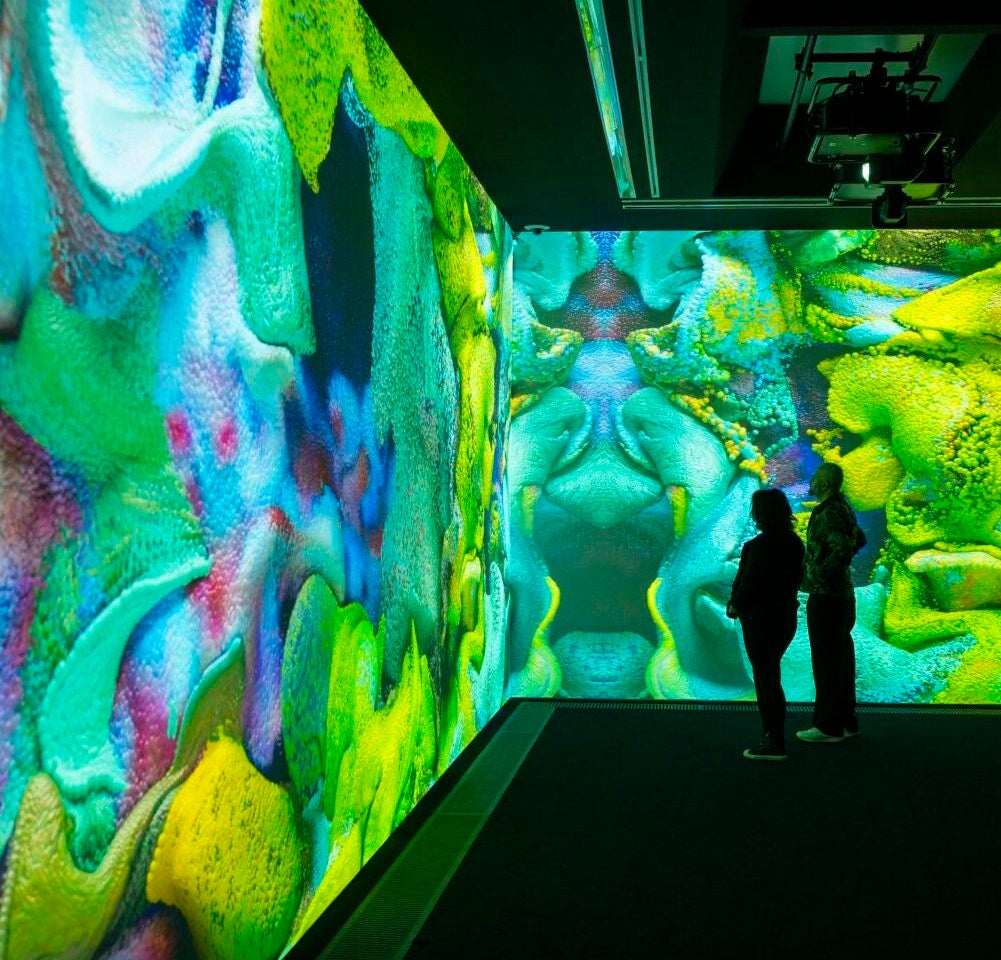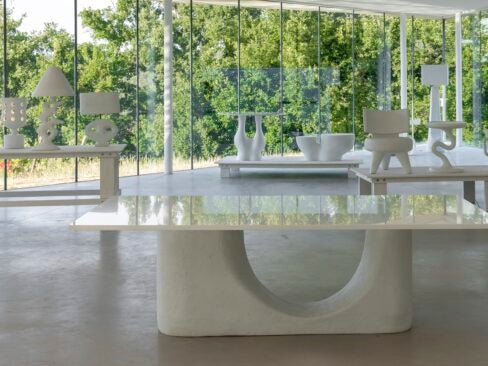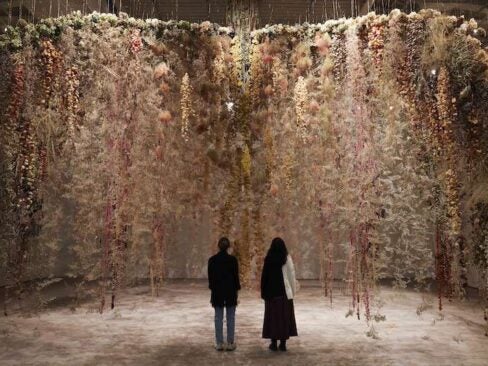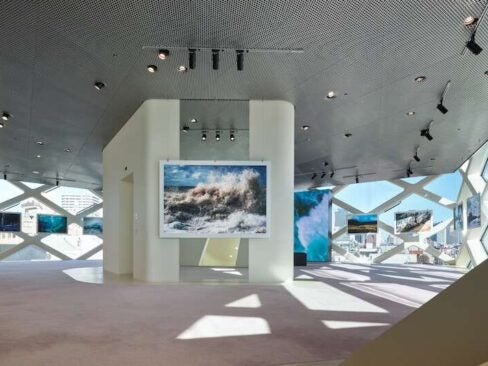If you are unfamiliar with Refik Anadol, then his first stroke of artistic mastery is getting you on board with what he does. Typically when the words ‘AI art’ are muttered, ideas of uninspired, autogenerated images are conjured up first, followed by an outpour of criticism and an eye roll immediately after.
Yet take one step past the doors of the Serpentine into Echoes of the Earth: Living Archive, Anadol’s first major solo exhibition in the UK, and those preconceptions are immediately dispelled. Before your eyes can adjust to the change of the light from Kensington Gardens to the inside of the Serpentine’s North Gallery, you are immediately confronted by the huge data wall, the largest of the three artworks in the exhibition, as Anadol introduces it.
[See also: Inside the Edward Burtynsky Exhibition at the Saatchi Gallery]
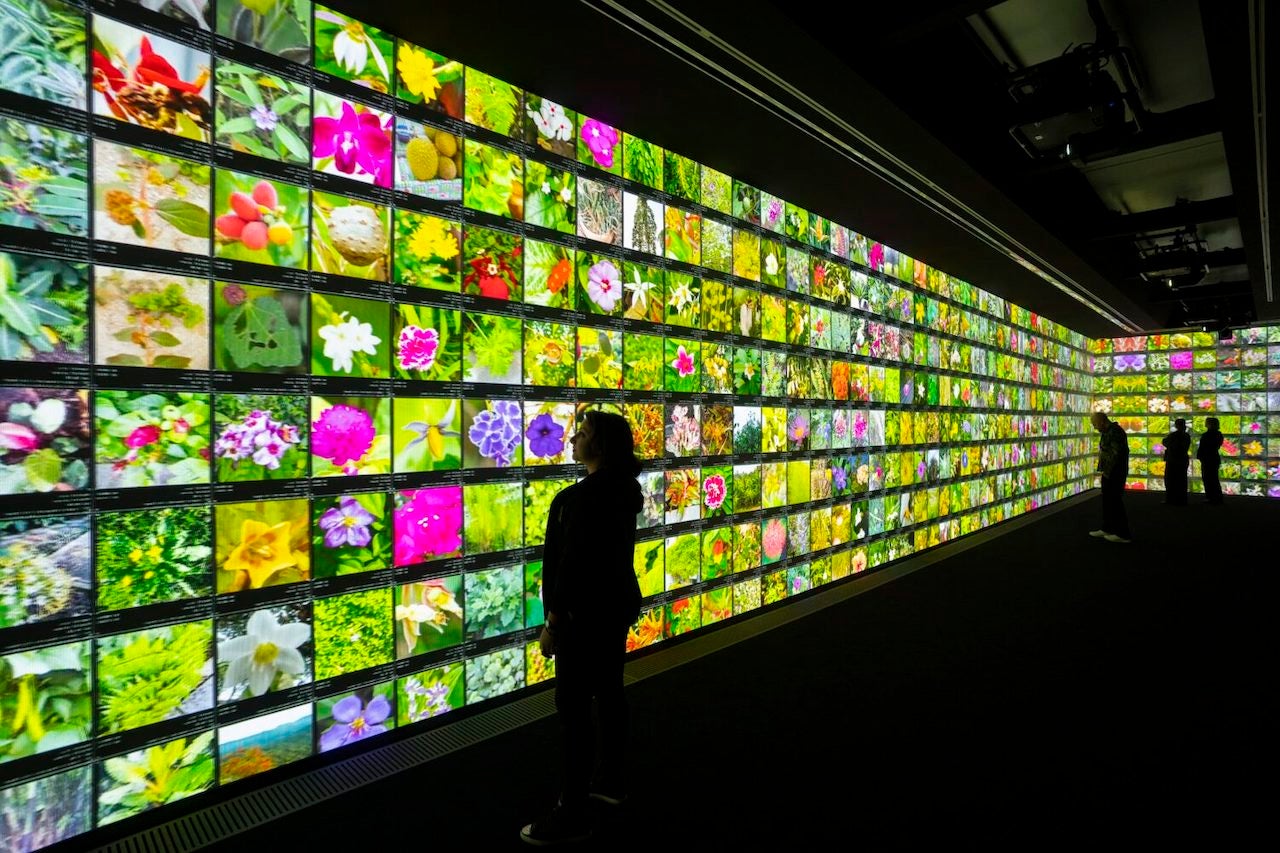
“I call them living artworks,” he explains as he guides us through the galley on a surprisingly busy Thursday afternoon. Across the huge screen, real-time generative artworks of flora, fungi and fauna swoosh and crash and melt into each other in movements that are “inspired by nature; inspired by the water and the winds, and their unity”. It is mesmerizing, displacing and hypnotic, but it also lays bare the mechanism behind Echoes of the Earth, the Large Nature Model (a play on the typical AI algorithm Large Language Model). As the world’s first AI model based on nature, it cycles through and responds in real-time to the data it was fed: some 4.5 billion images of coral reefs and rainforests, 25,000 sounds of bird songs and half a million scent molecules.
The algorithm is trained on sources from the likes of the Smithsonian Institution, National Geographic and the Natural History Museum, as well as photography collected by Anadol and his team from their three months living in the Amazon rainforest. The exhibition is largely inspired by Anadol’s musing on how nature became something distant and far. “We can go to nature, but can nature come to us?” he wonders.

To do so he wants the visitors to the Serpentine to become truly immersed in it. In a small corridor in a section of the exhibition, visitors are invited to lie back on one of the scattered beanbags and gaze up at the ceiling as the screen merges and moves with colors. Living Archive: Large Nature Model (2024) is the exhibit’s showstopper, wraps around the exhibition’s interior perimeter and envelops visitors with its sheer scale and expansiveness, as images of animals metamorphose into each other. Overhead, an otherworldly soundtrack constantly composes in response to the artwork on the screens, “to the colors, the movements, the speed and fluidity,” Anadol adds.
[See also: Art Explora’s Traveling Museum Boat to Set Sail from Marseille]

Subjectively, Echoes of the Earth: Living Archive is not necessarily difficult to comprehend – but that’s also the point. Anadol wants to get visitors excited by AI beyond its aesthetics: about its possibilities for discussion, collaboration and influence to, in this case, help the planet. “It’s an exciting time for AI because the world is very curious about it, and I want to demystify it,” he notes.
Because while the rest of the world grapples to understand terms like machine intelligence and data learning, the Turkish-born artist has been pioneering in this space for almost a decade. In 2016, he was selected as Google’s first in-residence artist for its Artists and Machine Intelligence (AMI) program and was one of the first artists supported by Rolls-Royce’s dedicated arts program, Muse, in 2019. Anadol and the marque have had a longstanding relationship since. In 2020, Muse commissioned Art of Perfection: Data Painting, a digital artwork that uses data from every car paint color (all 44,000 of them) developed at Rolls-Royce’s home Goodwood, where it remains on permanent display, and Muse continues to show its support through its partnering for Echoes of the Earth: Living Archive.
Echoes of the Earth: Living Archive is showing at Serpentine North Gallery until April 7, 2024.
[See also: UK’s Largest Yoko Ono Exhibition Opens at the Tate Modern]





